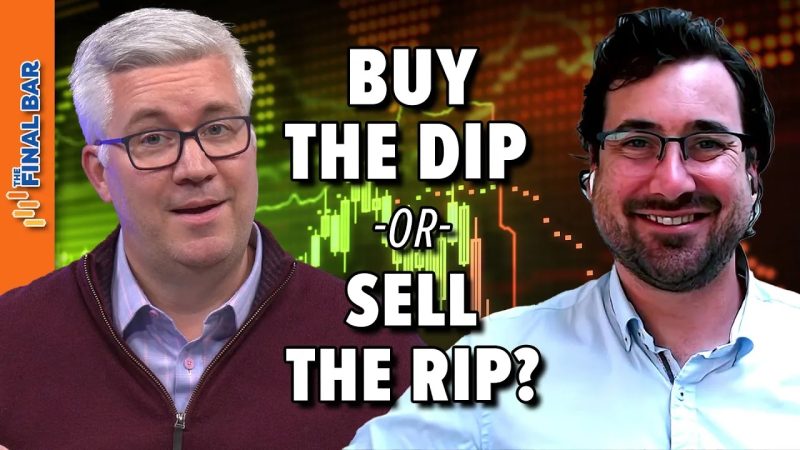As markets ebb and flow, investors are often faced with the dilemma of whether to buy the dip or sell the rip in order to maximize their returns. This decision is crucial, as it can significantly impact an investor’s portfolio. Understanding the concept of buying the dip and selling the rip is essential for making informed investment decisions and navigating volatile market conditions effectively.
Buying the dip refers to purchasing assets when their prices have experienced a temporary decline or dip. This strategy is based on the assumption that the asset’s value will eventually recover and potentially rise even higher than before. Investors who buy the dip aim to capitalize on discounted prices and take advantage of potential future gains.
On the other hand, selling the rip involves selling assets after their prices have surged, or ripped, to high levels. This strategy recognizes that assets may become overvalued after rapid price increases and seeks to lock in profits before a potential downturn. Investors who sell the rip aim to secure their gains and avoid potential losses if the asset’s price corrects downward.
Determining whether to buy the dip or sell the rip requires careful consideration of various factors, including market trends, asset fundamentals, risk tolerance, and investment goals. Here are some key points to keep in mind when deciding which strategy to employ:
Market Conditions: Assess the current market environment and overall trend. Buying the dip may be more suitable in a bullish market, where temporary price dips could present buying opportunities. Conversely, selling the rip may be more prudent in an overbought market where prices have surged to unsustainable levels.
Risk Management: Consider your risk tolerance and investment horizon. Buying the dip can be riskier as it involves investing in assets that have experienced recent declines. Proper risk management strategies, such as setting stop-loss orders or diversifying your portfolio, are crucial when buying the dip. Selling the rip may help protect against downside risk by locking in profits before a potential reversal.
Fundamental Analysis: Conduct a thorough analysis of the asset’s fundamentals, including financial performance, industry trends, and market outlook. Buying the dip in fundamentally strong assets with growth potential may increase the likelihood of future gains. Selling the rip in assets that have become overvalued relative to their fundamentals can help prevent losses in case of a market correction.
Psychological Factors: Emotions play a significant role in investment decision-making. Fear of missing out (FOMO) may drive investors to buy the dip without considering the underlying reasons for the price decline, leading to potential losses. Similarly, greed may prevent investors from selling the rip and taking profits at the right time. Staying disciplined and rational when making investment decisions is essential for long-term success.
In conclusion, the decision to buy the dip or sell the rip depends on various factors and requires careful assessment of market conditions, risk management strategies, fundamental analysis, and psychological factors. By understanding these concepts and applying them judiciously, investors can navigate market volatility and make informed decisions to enhance their investment outcomes. Whether buying the dip or selling the rip, staying informed, disciplined, and adaptable is key to achieving success in the dynamic world of investing.
